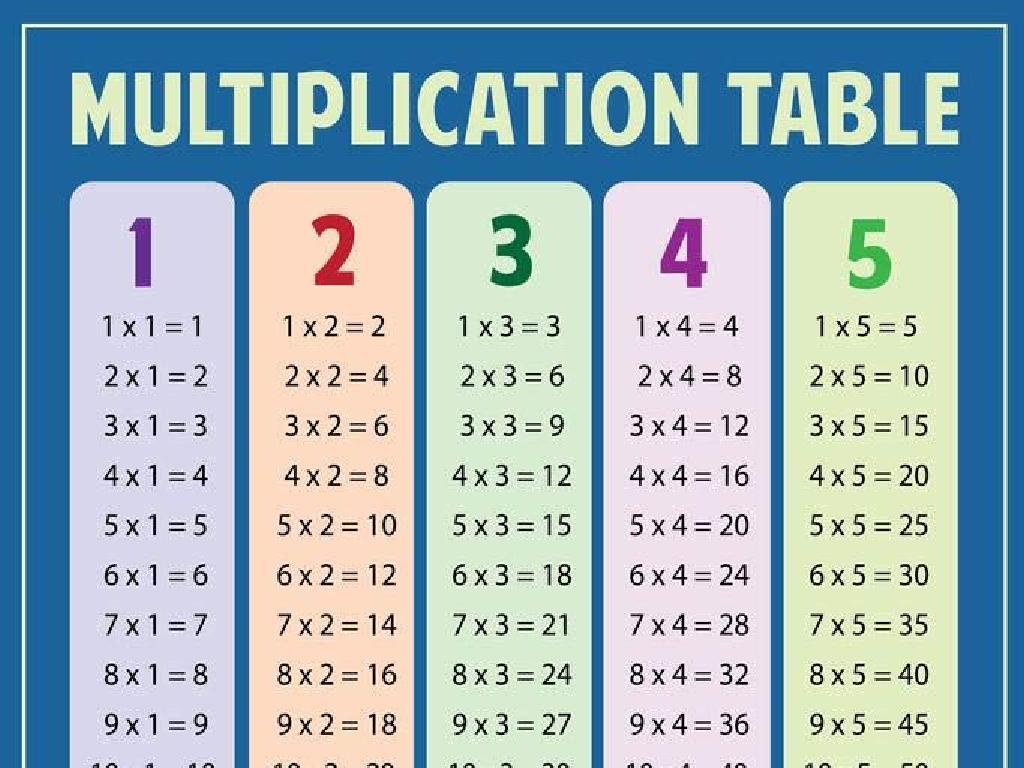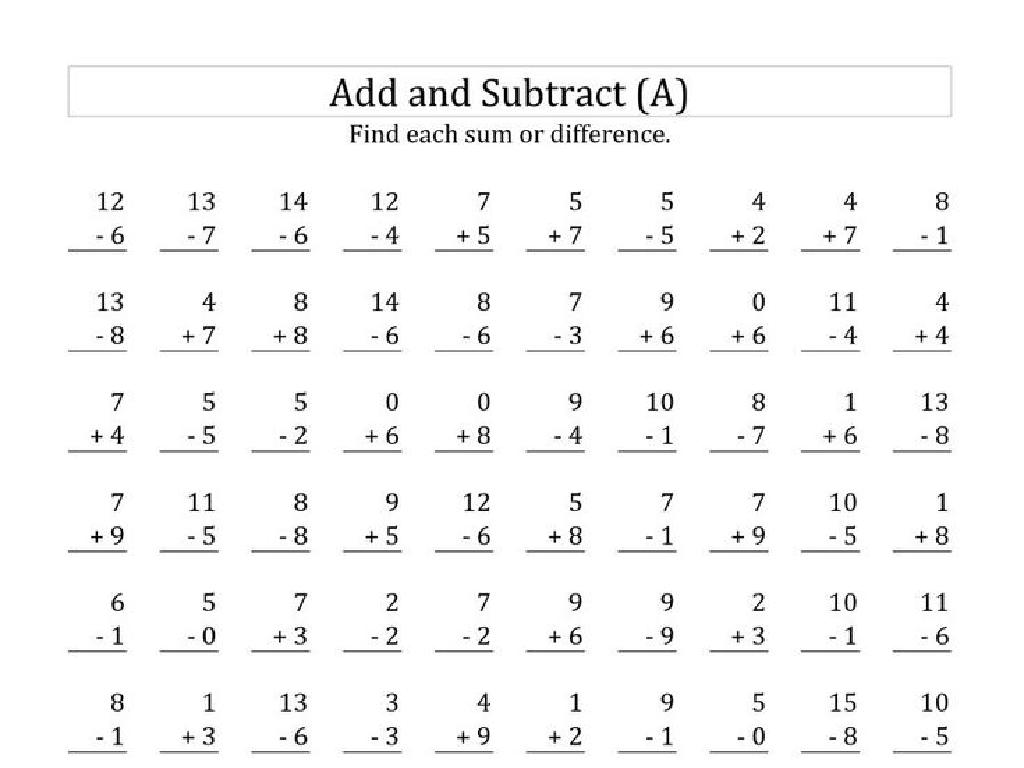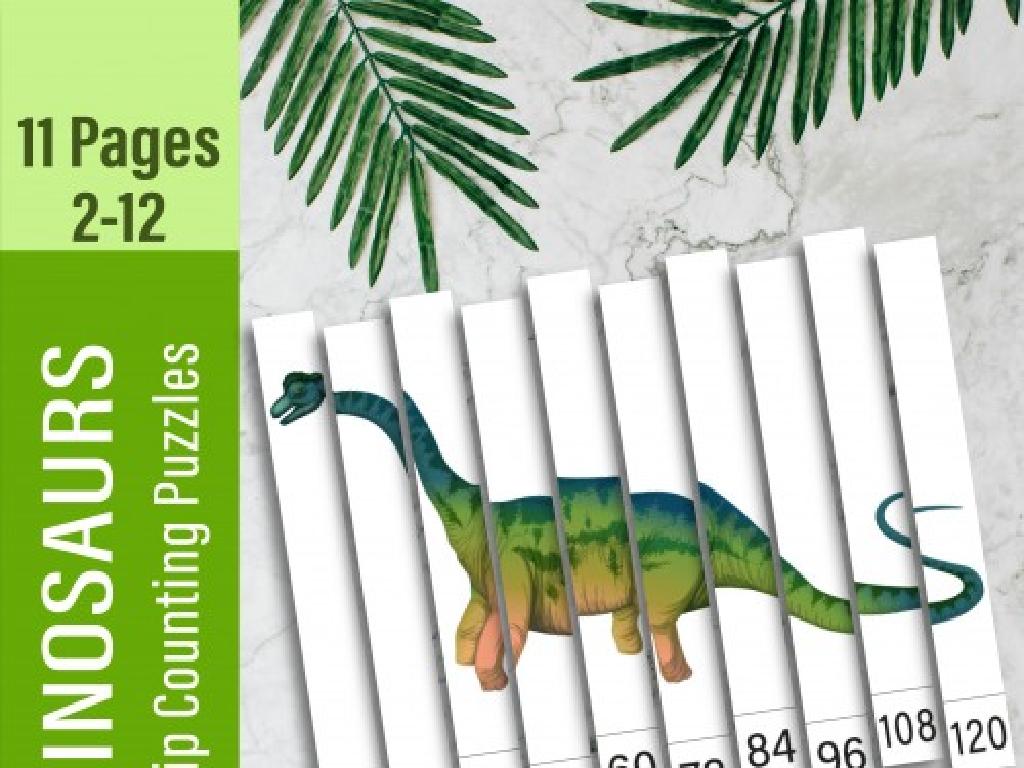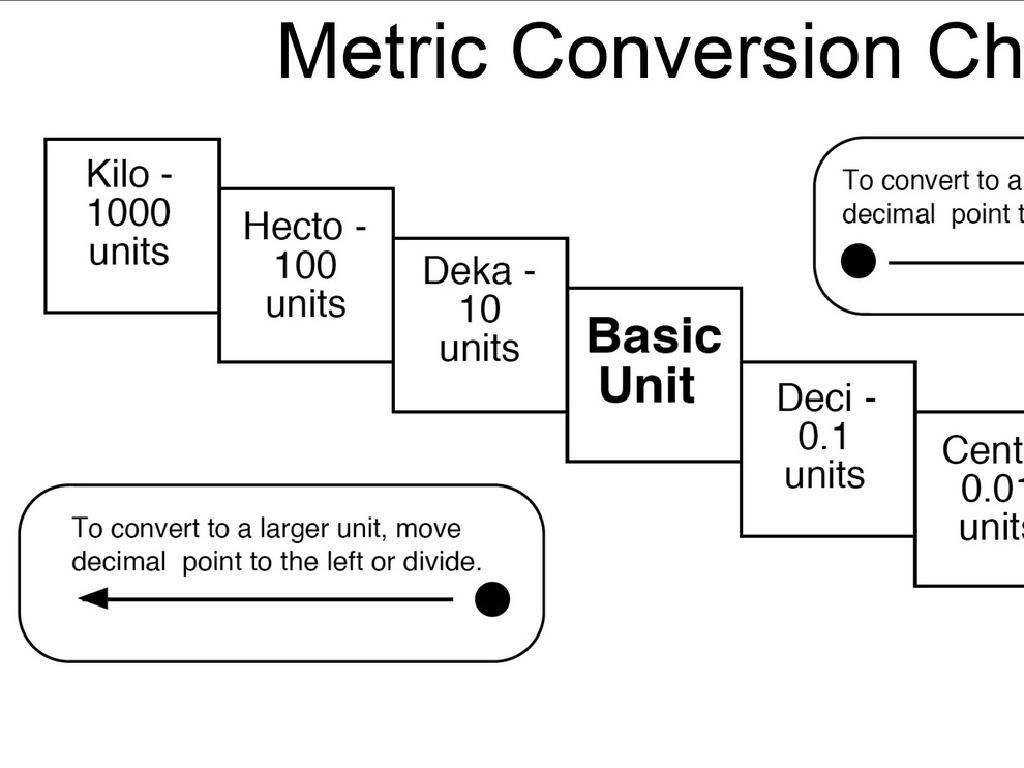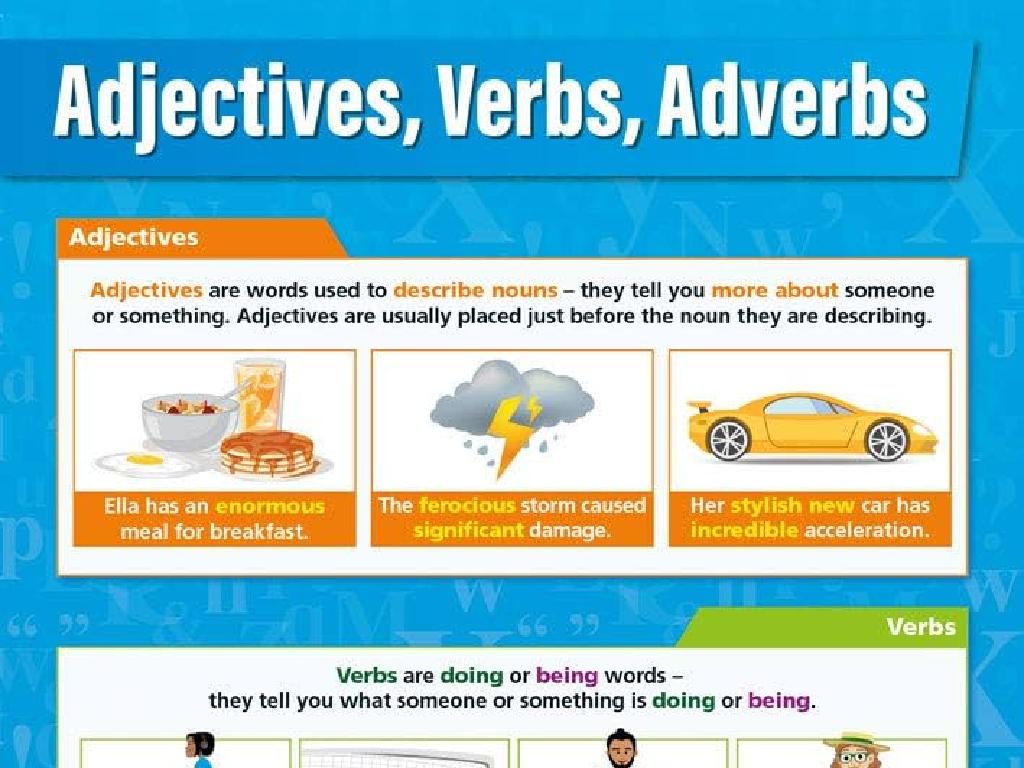Graph Triangles And Quadrilaterals
Subject: Math
Grade: Sixth grade
Topic: Two-Dimensional Figures
Please LOG IN to download the presentation. Access is available to registered users only.
View More Content
Graphing Triangles and Quadrilaterals
– Explore 2D figures
– Today’s focus: Triangles & Quadrilaterals
– Learn to graph 3-sided & 4-sided figures
– Basics of plane shapes
– Shapes like squares, rectangles on a flat surface
– Graphing shapes on a coordinate plane
– Use coordinates to plot shapes accurately
|
This slide introduces students to the concept of two-dimensional figures with a focus on graphing triangles and quadrilaterals. Begin by explaining what 2D figures are and how they differ from 3D figures. Emphasize that today’s lesson will concentrate on understanding and graphing the most common types of polygons: triangles (three sides) and quadrilaterals (four sides). Discuss the properties of shapes that lie in a plane, such as having length and width but no depth. Move on to demonstrate how to graph these shapes on a coordinate plane, using the x and y axes to plot the vertices of the shapes. Provide examples of different triangles and quadrilaterals, and show how their coordinates determine their position and shape. Encourage students to participate by plotting simple shapes on their own graph paper.
Exploring Triangles
– Define a triangle
– A shape with three sides and three angles
– Triangle elements: vertices, edges, angles
– Points where sides meet are vertices, sides are edges, and inside corners are angles
– Classify triangles by sides
– Equilateral, isosceles, and scalene
– Classify triangles by angles
– Acute, right, obtuse, and equiangular triangles
|
Begin with the definition of a triangle, emphasizing its three-sided nature. Discuss the elements of a triangle, ensuring students can identify vertices (corners), edges (sides), and angles (space between edges). Move on to classification by sides: equilateral (all sides equal), isosceles (two sides equal), and scalene (no sides equal). Then, classify by angles: acute (all angles less than 90°), right (one angle exactly 90°), obtuse (one angle more than 90°), and equiangular (all angles equal). Use visual aids to help students recognize each type. Encourage students to draw examples and to find real-life objects that resemble these types of triangles.
Graphing Triangles on a Coordinate Plane
– Plot points on a coordinate grid
– Each point has an x (horizontal) and y (vertical) value
– Draw triangles using coordinates
– Connect the dots in sequence to form a triangle
– Example: Graph an equilateral triangle
– All sides are equal; if A(2,3), B could be (5,3)
|
This slide introduces students to the concept of graphing triangles on a coordinate plane. Start by explaining how to plot points using their x (horizontal) and y (vertical) values. Then, show how to connect these points to form different types of triangles. Use an equilateral triangle as a specific example to demonstrate how all sides are of equal length and how to find the coordinates of the vertices. Encourage students to practice by plotting their own points and creating various triangles. This will help them understand the relationship between geometry and coordinate graphing.
Exploring Quadrilaterals
– Define a quadrilateral
– A four-sided polygon with four angles
– Elements: vertices, edges, angles
– Points where sides meet, sides themselves, and corner angles
– Types: square, rectangle, parallelogram
– Examples include squares (equal sides), rectangles (equal opposite sides), and parallelograms (opposite sides parallel)
– Quadrilateral properties
|
This slide introduces students to the concept of quadrilaterals within the study of two-dimensional figures. Begin with the definition, highlighting that a quadrilateral is any four-sided polygon. Discuss the elements that make up quadrilaterals: vertices (corners), edges (sides), and angles (space between the edges). Then, explore the different types of quadrilaterals, such as squares, rectangles, and parallelograms, noting their unique properties. Emphasize how these properties distinguish one type of quadrilateral from another. Encourage students to identify and classify quadrilaterals in their environment for a practical understanding.
Graphing Quadrilaterals
– Plotting quadrilaterals using coordinates
– Use a coordinate plane to place the vertices of a quadrilateral
– Drawing quadrilaterals from vertices
– Connect the dots in order to form the shape
– Example: Graph a rectangle
– Rectangle with vertices (2,3), (2,5), (5,5), (5,3)
– Example: Graph a parallelogram
– Parallelogram with vertices (1,1), (3,1), (4,3), (2,3)
|
This slide introduces students to the concept of graphing quadrilaterals on a coordinate plane. Start by explaining how to use coordinates to locate the position of each vertex. Then, demonstrate how to draw the shape by connecting the vertices in the correct order. Use the examples of a rectangle and a parallelogram to show how the shape’s properties such as right angles in a rectangle or parallel sides in a parallelogram are reflected in the graph. Provide graph paper and ask students to practice plotting the given examples, ensuring they understand how to apply the concept to different quadrilaterals.
Properties of Triangles and Quadrilaterals
– Explore congruence and similarity
– Congruent shapes are identical in form; similar shapes have proportional sides and angles.
– Sum of angles in shapes
– Add up angles inside any triangle or quadrilateral.
– Triangles: always 180 degrees
– No matter the type of triangle, the angles add up to 180°.
– Quadrilaterals: always 360 degrees
– Four-sided figures, like squares and rectangles, have angles that add up to 360°.
|
This slide introduces students to the fundamental properties of triangles and quadrilaterals, focusing on congruence, similarity, and the sum of angles. Congruence and similarity are key concepts in understanding how shapes can be equivalent or proportional. The sum of angles is a crucial property that helps in solving various geometric problems. Emphasize that for triangles, the sum of the interior angles is always 180 degrees, and for quadrilaterals, it is always 360 degrees. Provide real-life examples such as engineering and architecture where these properties are applied. Encourage students to think of other real-life applications and to practice finding the sum of angles in different triangles and quadrilaterals they encounter.
Class Activity: Let’s Graph!
– Graph triangles and quadrilaterals
– Use graph paper and a ruler
– Ensure lines are straight and corners meet
– Share your graphs with the class
– Explain your graphing choices and methods
– Discuss the shapes graphed
– Talk about the properties of the shapes
|
This activity is designed to help students practice graphing two-dimensional figures accurately using graph paper and a ruler. It will reinforce their understanding of the properties of triangles and quadrilaterals. Provide students with specific triangles and quadrilaterals to graph, ensuring a variety of types and sizes. Encourage precision in their work. After graphing, students will share their graphs with the class, explaining their approach and discussing the properties of the shapes they graphed. Possible activities: 1) Graph different types of triangles (scalene, isosceles, equilateral). 2) Graph various quadrilaterals (square, rectangle, parallelogram, trapezoid). 3) Have students compare and contrast the shapes they graphed. 4) Discuss the importance of scale and proportion in graphing. 5) Create a gallery walk where students observe and discuss each other’s work.
Wrapping Up: Triangles & Quadrilaterals
– Recap: Graphing shapes
– Homework: Find & graph shapes
– Search for two different triangles and quadrilaterals in your environment.
– Discover unique triangles
– Look for triangles with varying sides and angles.
– Explore quadrilaterals
– Find quadrilaterals like rectangles, squares, or other four-sided figures.
|
As we conclude today’s lesson on graphing triangles and quadrilaterals, students should be comfortable with plotting these shapes on a coordinate plane. For homework, they are tasked with finding and graphing two unique triangles and quadrilaterals, which will help reinforce their understanding of the shapes’ properties. Encourage them to look for real-life examples of these shapes to connect the lesson with the world around them. In preparation for the next class, students should start thinking about circles and their properties. Provide a brief introduction to what they can expect to learn about circles to pique their interest.

